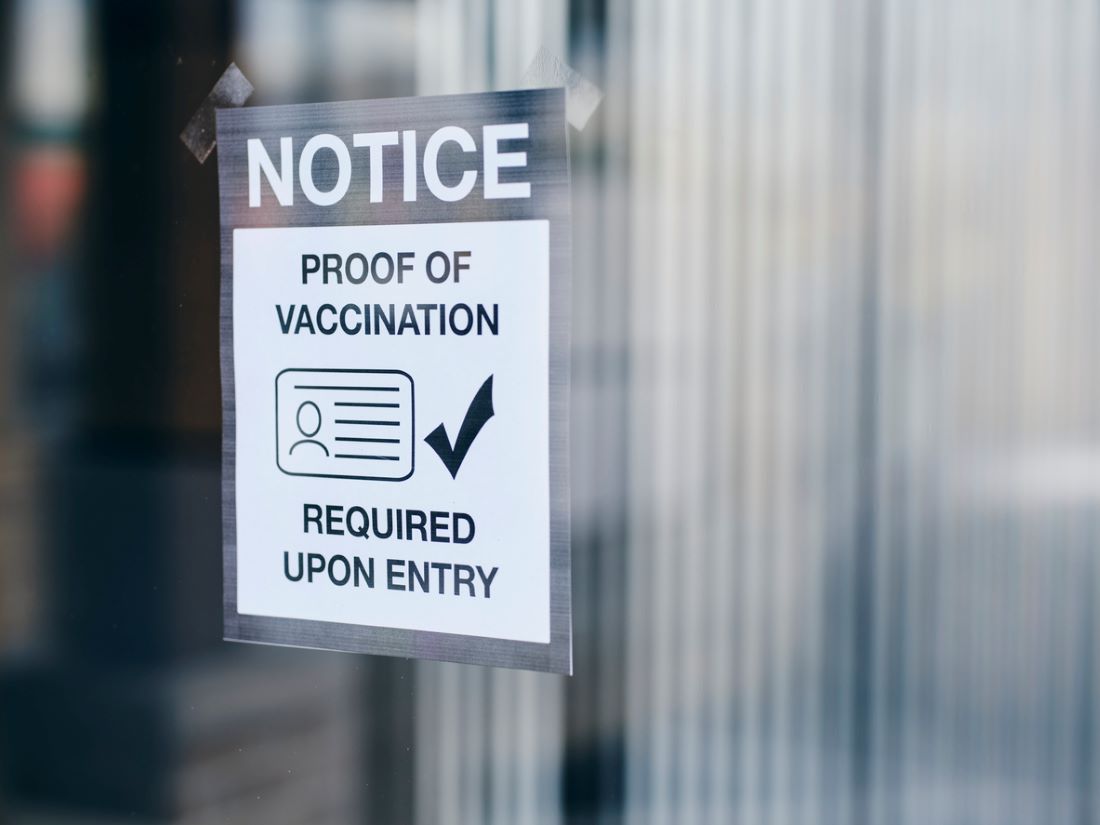Survey reveals that majority of employers will require vaccination
Research from Willis Towers shows that inoculation incentives are fading, and that leaders are split on whether mandates will harm or help retention.

Despite the ongoing legal limbo and heated debate about vaccine mandates, new data shows that a majority of U.S. employers will require employees to get inoculated against COVID-19. And yet, even with the threat of the omicron variant looming, employers are split on whether vaccine mandates will help with recruiting or lead to mass resignations.
That’s a key takeaway from a new Willis Towers Watson survey released Tuesday, which gained valuable feedback from 543 U.S. employers.
The survey found:
- One in three (31%) of employers considering mandates are “very concerned” that this could contribute to employees leaving their organization, yet nearly half believe mandates could help recruit or retain workers.
- Nearly all employers will offer testing (87%), most on a weekly basis (80%).
- One quarter (25%) of employers will require unvaccinated employees to pay for testing unless prohibited by state law.
- Nearly all employers (90%) require or plan to require masks be worn indoors.
- Three quarters (75%) offer no financial incentives for inoculation, while 14% have discontinued or plan to discontinue financial incentives for getting the jab.
Other key survey findings include:
- Business travel: Half of respondents (50%) have pandemic restrictions in place for business travel. Among those, nearly two-thirds (65%) prohibit international travel, while 53% require approval for international travel. Roughly one-quarter (27%) prohibit domestic business travel.
- Vaccination rates: Nearly one in five employers (19%) believe their employee vaccination rate is under 50%, and 33% believe 75% or more of employees are vaccinated.
- COVID-19 testing: Among those that are offering or planning to offer testing, nearly half (47%) are either unsure or have not decided what type of testing to deploy, and 40% are either unsure or have not yet decided who would pay for testing.
- Exemptions: Over half of respondents requiring or planning to require vaccinations will evaluate requests for medical exemptions (51%) and religious exemptions (58%) internally.
What the data means (for you)
As the Biden administration’s vaccine mandate remains with the courts, and as hard deadlines keep getting pushed back, there does appear to be a bit of wiggle room for companies to get their affairs (and policies) in order. As a spokesperson from the Office of Management and Budget recently stated, the “goal is to protect workers, not penalize anyone.”
However, it seems most U.S. companies are erring on the side of caution.
Willis Towers’ survey, which was conducted Nov. 12 to 18, found that 57% either require or plan to require COVID-19 vaccinations. That includes 18% currently requiring vaccinations, 32% that plan to require vaccinations only if OSHA’s Emergency Temporary Standard takes effect and 7% that plan to mandate vaccinations regardless of the mandate’s status.
But what about the vocal minority who say they’d sooner quit than get the jab? Just 3% of Willis Towers’ respondents with vaccination mandates in place have reported a spike in resignations, although 31% of those planning mandates are “very concerned” that a mandate could contribute to employees leaving their organizations.
Alternately, 48% believe that a vaccine mandate could “help recruit and retain employees.”
Other steps companies are taking right now
On top of vaccine mandates, employers are planning to require testing and masks to protect employees who are returning to the workplace. Eighty-four percent of employers will offer testing, with 80% saying they’ll do so on a weekly basis. One-quarter (25%) will require unvaccinated employees to pay for testing unless prohibited by state law. Ninety percent of employers already require or plan to require masks to be worn indoors.
Dr. Jeff Levin-Scherz, population health leader for Willis Towers Watson, says it’s unwise for companies to just wait for the courts to sort this all out. He says:
“Despite the current holding pattern pending the court rulings, we advise employers to proceed with plans to implement the mandate as well as other efforts to protect their workers.”
He adds that companies can increase participation and decrease vaccination (and booster) resistance by offering “scheduling flexibility and time off.” It also helps to “promote regular testing, stipulate mask wearing onsite to ensure employee health and safety — and support this with regular communications.”
Getting back to ‘normal’
The survey also found that companies are throttling back financial incentives for vaccinations. Just 2% of respondents to this survey report that they have either a health insurance surcharge for unvaccinated employees or a premium reduction for vaccinated employees in place. Additionally, 75% offer no financial incentives, and 14% have already discontinued or plan to discontinue financial incentives. (Gone is free beer, scholarships and fishing licenses.)
This disappearing act for incentive programs is telling, as it speaks to companies’ desire to claw back toward some semblance of pre-pandemic normalcy. To wit, 29% of respondents say their organizations have already reached their “new normal” in terms of returning to the workplace and ending pandemic-related policies. Meanwhile, 28% say they don’t expect their organizations to reach a “new normal” until the third quarter of 2022 or later.
Respondents also report that 34% of employees are now working remotely. (Though Willis Towers concludes that this number could drop to 27% in the first quarter of 2022.) Employers that have brought workers back to the workplace cite public health recommendations (79%), state regulations and recommendations (74%) and business needs (71%) as top considerations in their decisions.
As Levin-Scherz points out, the risk of COVID-19 infection is higher right now than it was a month ago, so many companies are pushing back return-to-office dates. Understandably so, especially now with the threat of the new Omicron variant.
This will all look different depending on your industry, and policies will certainly fluctuate as the pandemic continues to morph, shift and drag on. However, it all comes down to basic employee safety.
“Much has changed since the onset of the COVID-19 pandemic. Yet vaccination, masking, distancing and better ventilation remain essential in protecting workers from the virus and its variants,” Dr. Levin-Scherz concludes.







